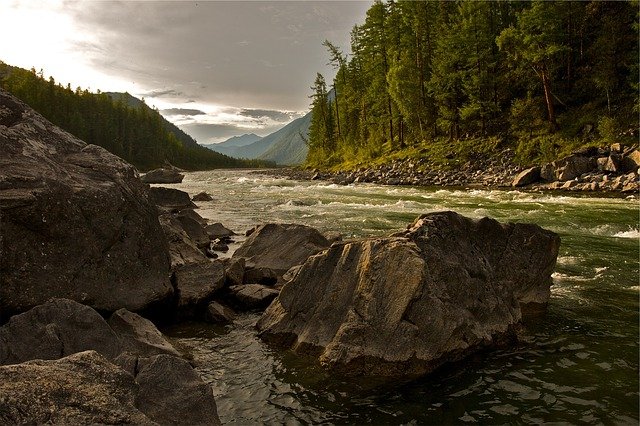
Gradation comes after "degradation" and "transportation"
The geological process through which sediments accumulate on a depressed surface is called aggradation . In this way, the aggradation, with the filling of this type of areas, tends to level the surface.
Degradation, transportation and aggradation
Aggradation is the third stage of gradation , which begins with the degradation of the land (through erosion ). Then the transport of sediments occurs and finally comes the instance of aggradation.
What pleasing does, in short, is contribute to filling a depression . This is possible from the deposition of sediments on the bed of a channel, for example.
If the current of a river is no longer able to carry away all the sediments, aggradation occurs. This is generally a consequence of an increase in sediment volume or a drop in flow . When the current has less drag capacity, aggradation appears.
It is important to keep in mind that degradation and aggradation occur naturally periodically due to changes in sediments and flows. The dynamics, however, can be affected by human actions. The construction of a dam , to mention one possibility of intervention, modifies the circumstances in which degradation and degradation occur.
River aggradation
As a process that occurs within the framework of fluvial dynamics, aggradation implies the development of a flat surface due to sedimentation. In this case we speak of fluvial aggradation . In other words, this process consists of accumulating sediments in streams and rivers.
Above we mentioned that aggradation does not occur all the time, but when the amount of sediment recorded in a river is greater than what the channel is capable of carrying , so that the existence of these materials is not enough, but that the volume must exceed a certain value. To cite one possibility, this increase in the amount of sediment can occur when meteorological conditions or the climate of a region cause the flow of a river to decrease considerably.
Faced with such a change, it is said that the waters of the river lose competition , a word that in this context is defined as "the carrying capacity." In times of drought, there is an inevitable decrease in the river's flow , something that can translate into apparent stillness. However, the sediments are still there, and as soon as a flood arrives, aggradation appears, generating course changes, meanders, avulsion, mouths in deltas, fluvial terraces or anastomosing rivers.
Although in a previous paragraph we stated that pleasure occurs naturally, humans can also cause similar results through different actions. One of the most common in this context is the creation of a dam , although there are more types of obstacles that can be located in the bed of a river.

Changes in sediments and flows cause aggradation
The sediments
This concept is key to understanding the pleasure process. It is a solid material that accumulates on the surface of the Earth and is derived from different phenomena that take place in the atmosphere, in the biosphere and in the hydrosphere , some of which are the following: temperature changes, circulation of waters (underground or surface), movement of water (in lakes or seas), the action of living organisms, meteorological precipitation, etc.
The duration of the sediments is a factor to highlight, since it can reach several million years . In fact, after such long periods, they consolidate into rock form. Of course, as with aggradation, they can be carried away, both by water and by wind.
